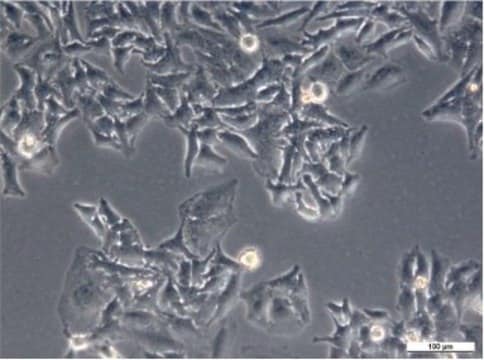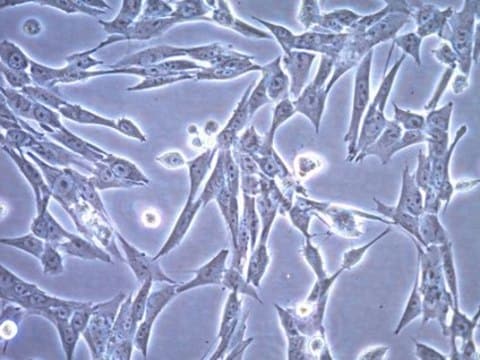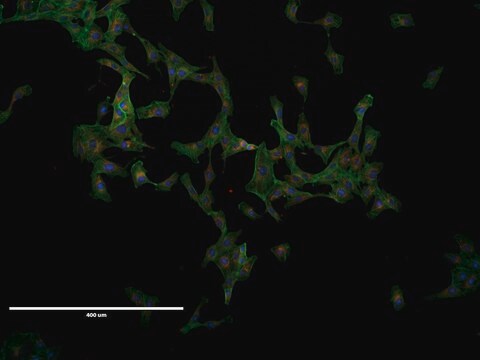Recommended Products
Product Name
NMuMG, 94081121
biological source
mouse breast
growth mode
Adherent
karyotype
Not specified
morphology
Epithelial
products
Not specified
receptors
Not specified
technique(s)
cell culture | mammalian: suitable
shipped in
dry ice
storage temp.
−196°C
Cell Line Origin
Mouse mammary gland, normal epithelial
Cell Line Description
Initiated from the mammary gland tissue of an adult NAMRU mouse and one of a series of epithelial cell lines derived from normal glandular tissue of mice. The cells exhibit many ultrastructural features of secretory epithelium as well as desmosomes or intermediate junctions, microvilli and tonofibrils. Hemicytes or domes develop when dense monolayers are maintained for several weeks without sub-cultivation. The cells produce benign cystadenomas when inoculated into isogenic mice and are negative for type C oncornaviruses.
Application
NMuMG has been used to compare the actions of insulin like growth factor binding protein 5 (IGFBP-5) with transforming growth factor β 1 (TGFβ1) on epithelial cells. It has also been used to measure the influence of phorbol 12-myristate 13-acetate (PMA) and estradiol on bone morphogenetic protein receptor type 2 (BMPR2) gene expression.
Culture Medium
DMEM + 2mM Glutamine + 10ug/ml Insulin + 10% Foetal Bovine Serum (FBS).
Subculture Routine
Split sub-confluent cultures (70-80%) 1:2 to 1:4 i.e. seeding at 1-3x10,000 cells/cm2 using 0.25% trypsin/EDTA; 5% CO2; 37°C.
Other Notes
Additional freight & handling charges may be applicable for Asia-Pacific shipments. Please check with your local Customer Service representative for more information.
Choose from one of the most recent versions:
Certificates of Analysis (COA)
Lot/Batch Number
Sorry, we don't have COAs for this product available online at this time.
If you need assistance, please contact Customer Support.
Already Own This Product?
Find documentation for the products that you have recently purchased in the Document Library.
Our team of scientists has experience in all areas of research including Life Science, Material Science, Chemical Synthesis, Chromatography, Analytical and many others.
Contact Technical Service



